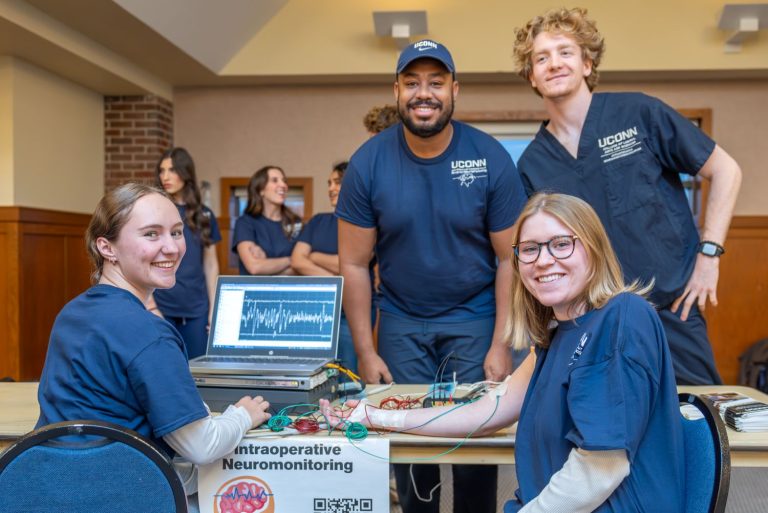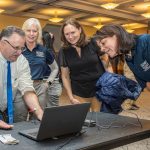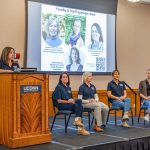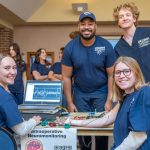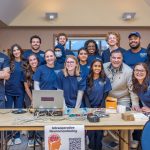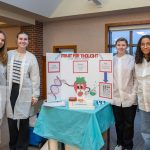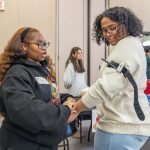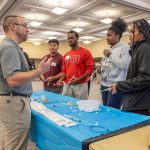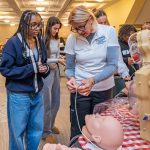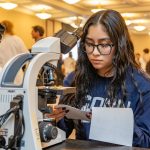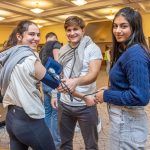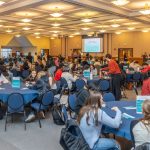More than 100 students participated in the Faculty of Health Sciences Healthcare Simulation event on Tuesday, November 12th.
This event was developed to provide students with the opportunity to learn how to use different types of medical equipment, an important skill for many jobs in the medical field. The event also allows students to get to know the department's faculty better and network with alumni and colleagues.
The event began with a faculty spotlight Q&A where students had the opportunity to ask questions about faculty members' career paths.
“This is intended to be an informal setting, like a conversation, so that students can follow up with faculty in the future or ask further questions,” said Anna, Lecturer and Academic Advisor in Allied Health Sciences.・Ramos says:
After their presentations, students rotated through the stations learning about various medical equipment and how to operate them, including echocardiograms, intubations, nasogastric tubes, and intraoperative neuromonitoring devices. The stations also included instruction on testing techniques and skills such as CPR and hemostasis.
“While there are many certification programs to become an MA/CNA/EMT, the need to increase opportunities to provide hands-on training in an affordable manner was a big topic at the first meeting of the Faculty of Allied Health Sciences Student Advisory Committee. It can be very expensive,” says health science student Jessica Harris, 25. “It was amazing to see how the faculty valued our feedback and responded to our needs.”
We received demonstrations from undergraduate and graduate students.
“They are real leaders,” says Jill Skowrenski, director of student placement and engagement. “They're practicing, they're thinking about how to do things, how to explain it. So it gives them career development opportunities as well.”
Each station was supervised by a faculty coordinator. Students can learn more about the faculty and their associated programs through the event's HuskyCT page.
I attended this event because I wanted to get a feel for what it was like to actually perform a medical procedure,” says Sydney Walker, 25, a health student. “My favorite part was getting the feel of working with real medical equipment, especially learning how to draw blood, use an AED, and intubate a medical mannequin.”
This event helped students gain a deeper understanding of not only how medical devices are used, but also how different disciplines work together to support patient health.
“It helps students connect the dots and show them how different disciplines in medicine come together,” Ramos says. “It's really important to understand how interdisciplinary teams work.”
At the end of the event, students had the opportunity to network and talk with the students who led the demonstrations, faculty, and fellow students.
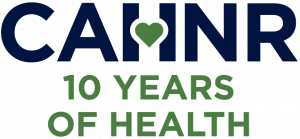
 “Students are not always in the same class,” Skowrenski said. “This is an opportunity for them to network with new faces.”
“Students are not always in the same class,” Skowrenski said. “This is an opportunity for them to network with new faces.”
“I hope it's a fun and interactive event,” Ramos said. “They're up most of the time, moving, using their hands, maybe learning new skills, and I think that's a really fun way to do it.”
This event was supported through a College of Agriculture, Health, and Natural Resources Educational Enhancement Grant.
This research is relevant to CAHNR's strategic vision area, which focuses on improving local, national, and global health and well-being.
Follow UConn CAHNR on social media

